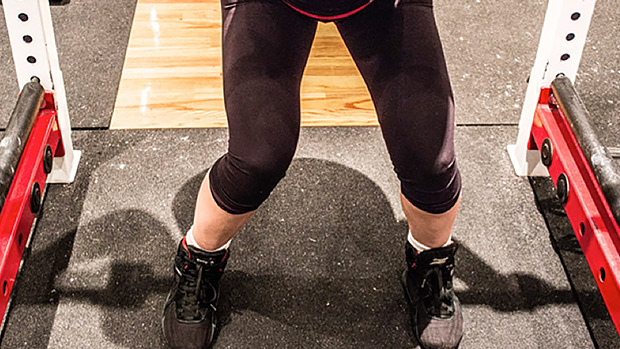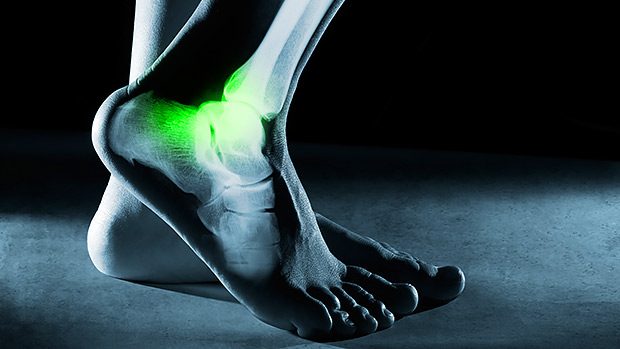You've probably seen a few people doing squats and deadlifts barefooted... and you've probably written them off as hippie-granola types. But lifting without shoes has some major benefits.
Here's how ditching your shoes can up the poundage on your big lifts, as well as help mitigate a common training injury.
When doing compound lower-body movements like squats and deadlifts, you want all of your force to be put directly into the ground. Ideally this force should be spread out evenly between three points of contact:
- The base of your first metatarsal (big toe)
- The base of your fifth metatarsal (pinkie toe)
- Your heel.
Pressing through the entire "tripod" of the foot allows for powerful, yet even force to be sent into the ground.
If you're currently lifting in a running shoe or other shoe with a soft surface, the force of your movement gets dissipated throughout your shoe. This leads to an inefficient transfer of force. If the line of force doesn't go directly into the ground you're wasting valuable energy that should go towards your lift.
If your shoes squish down as you squat or deadlift, you'll have to make adjustments to your body in an effort to compensate. Generally, this means shifting forward onto the toes since many shoes have thick, soft heels.
This not only puts you into suboptimal positions when squatting, it prevents consistency in your reps which will keep you from mastering the exercises.
As an exaggerated comparison, try air squatting on a pair of BOSU balls. You'll immediately notice how much more difficult the movement becomes due to a lack of stability as your feet squish into the balls. BOSU ball squats are fine for rehab, but if your goal is to improve your squat, you need a stable surface to drive into.

Pressing through the entire tripod of your foot is paramount to having a stable squat built from the ground up. If you're lifting in a shoe that has too much give, your feet will have a tendency to overly pronate which leads to valgus collapse (knees fall inward).
- Pronation occurs when you roll excessively onto the inside of your foot and your arch drops.
- When this happens, your tibia and femur internally rotate causing your knee to cave inward.
- Having your knee cave excessively inward causes excessive stress across the medial (inside) portion of your knee.
- Doing this on a consistent basis could potentially lead to knee issues.
This mechanical advantage gained from barefoot deadlifting will almost instantly put a couple pounds on your max deadlift. If you make yourself an inch shorter by taking off your shoes, you put yourself into a more mechanically advantageous position.
If you're regularly lifting in a shoe not meant specifically for lifting, you're basically doing deficit pulls on an unstable surface every time you deadlift!
Losing an inch or two off your height means you don't have to pull the bar as far. Combine this with the increased force production into the ground and you'll be pulling bigger numbers almost instantly.
Some gyms don't allow you to lift without shoes. If your local gym owner doesn't want your skanky feet stinking up his floor, here are two tips on selecting appropriate footwear.
- Generally speaking, an Olympic lifting shoe with an elevated heel is good for knee-dominant exercises in which the torso is more upright. If you do lots of overhead squats, front squats, and high-bar back squats, this is something you may want to look into.
- Shoes that are flatter and have a hard sole are a good choice for hip dominant movements in which the torso is more angled. If you regularly perform low-bar back squats, good mornings, and deadlifts, this type of shoe may be your go to.
T Nation earns from qualifying purchases as an Amazon Associate. Read more about our policy.





